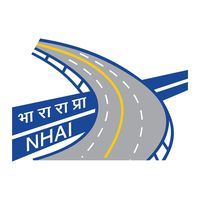Highways and Energy: India's Infrastructure Revolution** **
July 25, 2024, 6:33 pm

Location: India, Delhi, New Delhi
Employees: 1001-5000
Founded date: 1988
Total raised: $4.83B

Location: India, Maharashtra, Navi Mumbai
Employees: 10001+
Founded date: 1966
Total raised: $22.14M
**
India is on the fast track. Major infrastructure projects are reshaping the landscape, making travel quicker and more efficient. The National Highways Authority of India (NHAI) is at the forefront of this transformation. With new flyovers and bridges, the journey between Kanpur and Lucknow will soon take just 35 minutes. This is not just a number; it’s a lifeline for commuters and businesses alike.
The completion of six flyovers and 30 bridges is a game changer. It’s like opening a floodgate. Traffic congestion at critical junctions will ease, allowing for smoother travel. This project is part of a broader initiative to modernize India’s highway infrastructure. It aims to support sustainable urban growth and enhance regional connectivity.
Imagine the time saved. Commuters will enjoy shorter travel times. Businesses will benefit from quicker logistics. This is a win-win for everyone involved. The NHAI’s efforts align with the country’s goal of economic development. Improved road conditions mean safer journeys. The ripple effect of this project will be felt across the region.
But the NHAI is not stopping there. They are also tackling the issue of FASTags. Vehicles without properly affixed FASTags will face double toll fees. This move aims to streamline toll operations and reduce delays. It’s a simple solution to a complex problem. By enforcing these rules, the NHAI hopes to create a smoother experience for all highway users.
FASTags have already transformed toll collection in India. With a penetration rate of 98%, they have made electronic toll collection efficient. However, the NHAI recognizes that compliance is key. They are taking steps to ensure that users understand the importance of affixing FASTags correctly. This is about more than just fines; it’s about creating a culture of compliance.
Meanwhile, the energy sector is also buzzing with activity. India’s fuel consumption rose by 2.6% in June. This increase is driven by a surge in aviation turbine fuel (ATF) and petrol usage. The aviation sector is rebounding, with more flights taking to the skies. This is a sign of recovery from the pandemic’s grip.
Petrol consumption is also on the rise. As travel restrictions ease, people are hitting the roads again. This uptick in fuel consumption reflects a broader economic recovery. It’s a positive sign for the country’s growth trajectory.
In the corporate world, companies like Reliance Industries Limited (RIL) and Bharat Petroleum Corporation Limited (BPCL) are optimistic. After a tough first quarter, they anticipate a recovery in product cracks. Volatile crude prices and lower margins have posed challenges. However, both companies are hopeful that demand will stabilize.
The global economic landscape is shifting. Geopolitical tensions and market fluctuations have affected profitability. Yet, RIL and BPCL are resilient. They are preparing for a turnaround, ready to seize opportunities as they arise.
ONGC Videsh is also making moves. The company is investing $60 million in Azerbaijan. This strategic investment aims to expand its presence in the oil and gas sector. Azerbaijan is rich in hydrocarbon resources, making it an attractive destination for energy companies.
This investment aligns with ONGC Videsh’s long-term strategy. It’s about capitalizing on emerging opportunities. The company is looking to enhance its portfolio and secure substantial returns.
India’s infrastructure and energy sectors are intertwined. Improvements in transportation facilitate economic growth. As highways become more efficient, fuel consumption rises. This creates a cycle of growth and development.
The government’s focus on infrastructure is commendable. Projects like the Kanpur-Lucknow expressway are vital for regional connectivity. They are the arteries of the economy, pumping life into various sectors.
In conclusion, India is on the move. Infrastructure projects are transforming the landscape. The NHAI is leading the charge, ensuring that travel is faster and more efficient. Meanwhile, the energy sector is recovering, with companies poised for growth.
This is a pivotal moment for India. The road ahead is promising. With continued investment and innovation, the country is set to thrive. The future is bright, and the journey has just begun.
India is on the fast track. Major infrastructure projects are reshaping the landscape, making travel quicker and more efficient. The National Highways Authority of India (NHAI) is at the forefront of this transformation. With new flyovers and bridges, the journey between Kanpur and Lucknow will soon take just 35 minutes. This is not just a number; it’s a lifeline for commuters and businesses alike.
The completion of six flyovers and 30 bridges is a game changer. It’s like opening a floodgate. Traffic congestion at critical junctions will ease, allowing for smoother travel. This project is part of a broader initiative to modernize India’s highway infrastructure. It aims to support sustainable urban growth and enhance regional connectivity.
Imagine the time saved. Commuters will enjoy shorter travel times. Businesses will benefit from quicker logistics. This is a win-win for everyone involved. The NHAI’s efforts align with the country’s goal of economic development. Improved road conditions mean safer journeys. The ripple effect of this project will be felt across the region.
But the NHAI is not stopping there. They are also tackling the issue of FASTags. Vehicles without properly affixed FASTags will face double toll fees. This move aims to streamline toll operations and reduce delays. It’s a simple solution to a complex problem. By enforcing these rules, the NHAI hopes to create a smoother experience for all highway users.
FASTags have already transformed toll collection in India. With a penetration rate of 98%, they have made electronic toll collection efficient. However, the NHAI recognizes that compliance is key. They are taking steps to ensure that users understand the importance of affixing FASTags correctly. This is about more than just fines; it’s about creating a culture of compliance.
Meanwhile, the energy sector is also buzzing with activity. India’s fuel consumption rose by 2.6% in June. This increase is driven by a surge in aviation turbine fuel (ATF) and petrol usage. The aviation sector is rebounding, with more flights taking to the skies. This is a sign of recovery from the pandemic’s grip.
Petrol consumption is also on the rise. As travel restrictions ease, people are hitting the roads again. This uptick in fuel consumption reflects a broader economic recovery. It’s a positive sign for the country’s growth trajectory.
In the corporate world, companies like Reliance Industries Limited (RIL) and Bharat Petroleum Corporation Limited (BPCL) are optimistic. After a tough first quarter, they anticipate a recovery in product cracks. Volatile crude prices and lower margins have posed challenges. However, both companies are hopeful that demand will stabilize.
The global economic landscape is shifting. Geopolitical tensions and market fluctuations have affected profitability. Yet, RIL and BPCL are resilient. They are preparing for a turnaround, ready to seize opportunities as they arise.
ONGC Videsh is also making moves. The company is investing $60 million in Azerbaijan. This strategic investment aims to expand its presence in the oil and gas sector. Azerbaijan is rich in hydrocarbon resources, making it an attractive destination for energy companies.
This investment aligns with ONGC Videsh’s long-term strategy. It’s about capitalizing on emerging opportunities. The company is looking to enhance its portfolio and secure substantial returns.
India’s infrastructure and energy sectors are intertwined. Improvements in transportation facilitate economic growth. As highways become more efficient, fuel consumption rises. This creates a cycle of growth and development.
The government’s focus on infrastructure is commendable. Projects like the Kanpur-Lucknow expressway are vital for regional connectivity. They are the arteries of the economy, pumping life into various sectors.
In conclusion, India is on the move. Infrastructure projects are transforming the landscape. The NHAI is leading the charge, ensuring that travel is faster and more efficient. Meanwhile, the energy sector is recovering, with companies poised for growth.
This is a pivotal moment for India. The road ahead is promising. With continued investment and innovation, the country is set to thrive. The future is bright, and the journey has just begun.

